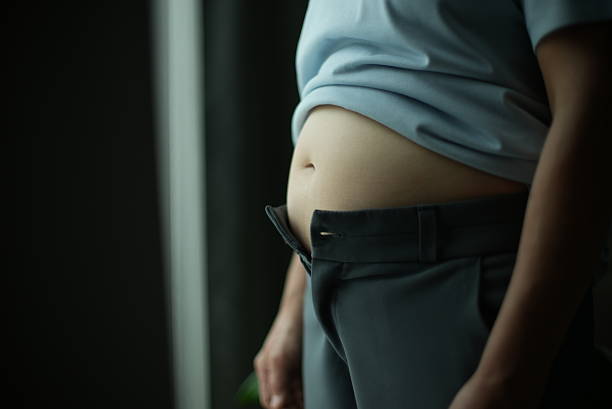Liposuction has become one of the most sought-after cosmetic procedures for individuals seeking to sculpt and contour their bodies. It offers a way to remove stubborn fat deposits that resist diet and exercise, helping people achieve a more toned appearance. As with any surgical procedure, understanding the recovery process is essential for setting realistic expectations and ensuring a smooth healing journey. One common concern among prospective patients is the level of pain experienced during recovery, which significantly influences overall satisfaction and comfort. This article aims to provide comprehensive insights into Liposuction in Abu Dhabi and the typical pain levels associated with the recovery phase, helping potential patients prepare adequately.
Understanding Liposuction and Its Recovery Process
What Is Liposuction?
Liposuction is a minimally invasive surgical procedure designed to remove localized fat deposits from specific areas of the body. It involves inserting a thin tube called a cannula through small incisions to suction out fat, resulting in a more contoured silhouette. The procedure can target various regions, including the abdomen, thighs, hips, arms, and neck.
The Recovery Timeline
The recovery process after liposuction varies depending on the extent of the procedure, the areas treated, and individual health factors. Generally, patients can expect a combination of mild discomfort, swelling, and bruising in the days following the surgery. Full recovery typically unfolds over several weeks, with most individuals returning to normal activities within a few days to a week, although swelling and residual soreness may persist longer.
Factors Influencing Pain During Liposuction Recovery
Extent of the Procedure
The amount of fat removed and the number of areas treated directly impact recovery discomfort. More extensive procedures tend to involve increased tissue trauma, leading to higher pain levels during healing.
Technique Used
Advancements in liposuction techniques, such as tumescent, laser-assisted, or ultrasonic liposuction, influence the degree of tissue trauma and, consequently, the pain experienced. Less invasive methods often result in a more comfortable recovery.
Individual Pain Threshold
Pain perception varies from person to person. Factors such as genetics, age, and overall health can influence how much discomfort a patient reports during recovery.
Postoperative Care
Adherence to postoperative instructions, including wearing compression garments and taking prescribed medications, can significantly diminish discomfort and facilitate healing.
Common Discomforts Experienced During Liposuction Recovery
Immediate Postoperative Phase
In the first few days following liposuction, patients typically experience soreness, tightness, and mild to moderate pain. This discomfort is often manageable with pain relief medications prescribed by the surgeon. Swelling and bruising are also common, contributing to a feeling of heaviness or fullness in the treated areas.
First Week to Two Weeks
As the initial inflammation subsides, pain levels usually decrease. However, residual soreness and firmness in the treated zones may persist. Compression garments help support healing and reduce swelling, which can aid in alleviating discomfort.
Long-Term Recovery
Even after the primary healing phase, some residual tightness or tenderness can remain for several weeks. Gentle activities and avoiding strenuous exercise are recommended to prevent exacerbating discomfort.
Managing Pain During Liposuction Recovery
Pain Relief Strategies
Effective pain management involves a combination of prescribed medications, over-the-counter analgesics, and non-pharmacological methods. Patients are advised to follow their surgeon’s instructions carefully to optimize comfort and healing.
Use of Compression Garments
Wearing compression garments as directed helps in reducing swelling, supporting the skin, and minimizing discomfort. These garments also promote better contouring outcomes and are an essential part of recovery.
Lifestyle and Postoperative Care
Maintaining a healthy lifestyle, staying hydrated, and avoiding activities that strain the treated areas can significantly influence pain levels and recovery speed. Proper rest and adherence to postoperative guidelines are crucial.
Tips for a Comfortable Recovery Post-Liposuction
Follow Medical Advice
Strictly adhering to the surgeon’s postoperative instructions ensures optimal healing and minimizes pain. This includes medication schedules, garment usage, and activity restrictions.
Stay Active but Gentle
Light walking is encouraged to promote circulation and reduce the risk of blood clots, but strenuous activities should be avoided until cleared by the surgeon.
Maintain Proper Hydration and Nutrition
A balanced diet and sufficient hydration support tissue repair and help reduce discomfort during recovery.
Monitor and Report Unusual Symptoms
While some discomfort is normal, any severe or persistent pain, swelling, or signs of infection should be promptly communicated to your healthcare provider for appropriate management.
When to Expect Pain Relief and Resumption of Normal Activities
Most patients notice significant pain reduction within the first two weeks. Swelling and residual discomfort may linger longer, but by this point, most individuals can resume light daily activities. More vigorous exercise and strenuous tasks are generally permissible after four to six weeks, depending on individual healing progress.
Conclusion
The recovery phase following Liposuction Abu Dhabi involves a spectrum of sensations, with pain being a common concern. While some discomfort is inevitable due to tissue trauma, modern techniques and proper postoperative care can make the recovery process more tolerable. Understanding the factors that influence pain levels and following recommended guidelines can help patients navigate their healing journey comfortably. Ultimately, with adequate preparation and care, most individuals find that the benefits of liposuction far outweigh the temporary discomfort experienced during recovery.

